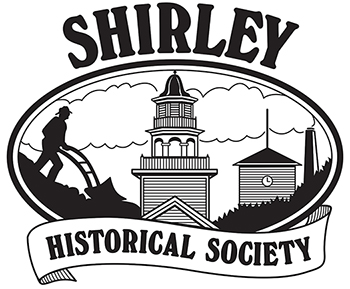The Phoenix Cotton/Samson Cordage Property
1849 – The Shirley Shakers laid the foundation for a mill on the banks of the Catacunemaug. The brick building was to be 140 feet long, 50 feet wide, and 3 stories high, exclusive of the attic which was filled with machinery and the bell tower with bell.
1850 – They completed construction of the factory building.
They later added three tenement buildings for families. These were each two stories high and had space for four families. There was also a three story high boarding house for single workers, and an office.
The complex was rented to the Steam Mill Company of New Bedford who adopted the name of the Phoenix Cotton Manufacturing Company.
1851 – Nearly 200 Shakers held an all day meeting to dedicate the building.
1852 – The Steam Mill company installed all the equipment and leased the building from, the Shakers. Note that the tail race was originally lined with elms all the way to the Nashua
1852 – The Shakers cooperated with other mill owners to build a dam and create a seven hundred acre reservoir for the water from the Catacunemaug.
1856 – The reservoir dam at Lake Shirley broke releasing 820 acres of water and destroying bridges, mills, and homes. The Shakers and other partners in the reservoir were held liable and the Shakers went into debt so they sold the mill to the New Bedford Company.
1868 – Phoenix Cotton owned 72 acres of land.
1875 – The town map showed that Phoenix Cotton Manufacturing owned buildings on Phoenix Street, the old Main Street, and the new Front Street. Some of these were storage facilities next to the train tracks. Others were housing for workers or for executives.
1880 – The tax and valuation listed the owner as Horatio Hathaway of New Beford
1881 – The mill and associated property was bought by C.W. and J.E. Smith who owned the Fredonian Cotton Mill, a short distance upstream.
Meanwhile, in Boston –
1870 – James P. Tolman began making braided cord
1876 – The trademark “Samson” was first put on solid braided rope being manufactured in a
small factory in Fort Hill Square in Boston.
1884 – The trademark of Samson and the Lion was registered to illustrate the superior quality
and characteristics of the product.
1883 – Chandler wrote his History of Shirley and mentioned the many immigrants from Ireland, Canada, Poland, Lithuania, and Russia who had moved into the area to work in the Shirley mills. By 1895 one fourth of Shirley’s population was foreign-born.
1888 – Samson Cordage Works was incorporated by James P. Tolman, its first President.
The business moved its manufacturing to Shirley while keeping its offices
in Boston. Herbert G. Pratt was the treasurer
1892 – Samson bought Fredonian Mill – It may have been at this time that the Fredonian mill building was used as a power plant for the main Samson factory.
1909 – Anniston Cordage Company of Alabama was acquired
Samson had the largest investment and the largest production in the cordage industry
1919 & 1920 – Samson extended Chapel Street, laid out Tolman Ave. and Rodman Ave. and
constructed duplexes to be rented to families of mill workers. They put steps into the
hillside so workers could cross the dam and go up the hill to go home for lunch.
1936 – Icard Cordage MFG CO. of North Carolina was acquired
1945 – Until World War II, the rope was made of cotton. Then they started using synthetics
here. The cotton machinery was moved to the southern factories.
1958 – Two in One braid was invented
1959 – The old tenements were knocked down to create parking spaces.
1970 – Ocean Systems of England and Scotland was added
1978 – The name was changed to Samson Ocean Systems
1978 – Ensearch Corporation of Texas acquired Samson Ocean Systems. It had six divisions
serving the hardware trade and general industry.
1984 – The 100th year anniversary of the trademark, the oldest in continuous use in the
United States, was celebrated with a parade and special programs.
1988 – The Shirley plant employed 80 hourly employees and about 45 others. Ensearch was
sold to a management team headed by its President Stephen Swiackey. The decision was made to close the Shirley plant. The workers were offered the chance to move and work at the other factories in Anniston, Alabama or Ferndale Washington.
For many years, Ted Norman served as caretaker for Ocean Systems. Minimum maintenance was done during that time. Eventually, D’Alan Hitch, Circle B, D&D Sweeps, and a body shop rented space in the buildings.
December, 1998 – Phoenix Limited Liability Corporation was formed and bought the property.
February, 2000 – They started work on the building to prepare it for modern use. They removed the old lights, bobbin racks, metal storage racks, and a lot of trash. They belt sanded the great old floors and ran gas onto the property. They ran T1 computer lines onto the site and began leasing out space to small businesses. The promise is that Phoenix will build to suit the needs of the occupants.
2006 – There are now over 30 companies leasing space at Phoenix, reusing the 150 year old Shaker mill buildings.
